Hearken Case Study: How WBEZ turned a question about poop into a live event and animated story
January 2017
Want to know more?
Feel free to reach out:
info@wearehearken.com
Stories from this Case Study:
How do you report a story that satisfies the curiosity of a child and appeals to your adult audience? It’s not easy, but our partners at WBEZ stepped up to the challenge when a question-asker named Satchel submitted her question to WBEZ’s Hearken series, Curious City.
As a Hearken partner, Curious City collects questions from their audience — in this case, questions about Chicago — and reports answers to those questions for radio, podcast and web.
Satchel was 5 years old when her mom asked if she had any questions to ask Curious City. With help from Emily (her mom), Satchel submitted this question: where does your poop go when you flush the toilet?
This question might seem silly on the surface, but Curious City took it seriously. It is, after all, a question of great civic engineering importance. The producers created an ambitious and kid-friendly multimedia story to get Satchel her answer. All told, their reporting included an audio story (for broadcast and podcast), an animated online interactive, and an all-ages event at Chicago’s Lincoln Hall where the Curious City team performed the story live.
We decided to provide a case study on this particular Curious City project because of its success as an all-ages story and its creative execution, and because it’s a great example of how delightful journalism can help unpack complex systems. As WBEZ reporter Shannon Heffernan points out, delightful reporting can help draw people into technical subject matter and prime them for further, more serious reporting on related topics.
Summary
For this case study, we interviewed Logan Jaffe, the Curious City multimedia producer on the project, WBEZ reporter/producer Shannon Heffernan and events producer Tyler Greene.
They identified three main goals in pursuing Satchel’s question:
- To infuse a technical subject with delight
- To reach children like Satchel and make the reporting itself accessible to kids her age
- To make a case for the story’s relevance to adults as well
They set out to show why folks of all ages should care about a question asked by a five-year-old that has the word “poop” in it. Producer Logan Jaffe points out that once you get past the funny factor, you realize how much infrastructure we take for granted because, she says, “all you have to do is flush the toilet.”
Curious City achieved their goals by:
- Creating an online interactive that broke down the technical process with illustrations and GIFs
- Producing an audio story, which positioned Satchel as an engaging main character, and showcased her delight as she learned the answer
- Producing a live event which engaged both parents and kids in an accessible and interactive experience
The interactive web story
As Curious City’s multimedia producer, Jaffe’s job is to strategize the best way to present a question’s answer online. The biggest challenge of the piece, she says, “is how to condense and make all this information understandable and still have some delight in there!” Satchel’s question is essentially a civic engineering question: how does Chicago’s sewage system work? In taking on this question, the Curious City team had the unique challenge of breaking down a jargon-filled, tedious and sometimes gross subject in a way that would be accessible to their 5-year-old question-asker.
Curious City’s initial plan was to do a straightforward web story featuring photos of the machinery at Chicago’s water treatment plant. But Jaffe says the team gradually realized that this approach wouldn’t work. “The actual images didn’t clarify that much about the process,” she says, “they’re just a bunch of containers.” Jaffe decided to take a more interpretive approach, using illustration and animation to better explain the sewage process.
Jaffe says that moving beyond photos was also necessary because of the sheer scale of the process from the toilet to the plant. She realized that animations would visualize the nuances of the sewage process in a way that photos and videos couldn’t. So Curious City teamed up with illustrator Simran Khosla to design an interactive explainer that breaks the process down step by step with colorful GIFs and clear captions. (Jaffe says they asked Khosla to channel the aesthetic of children’s book writer Richard Scarry.)
Executing the answer this way meant that Curious City could avoid the gross-out factor of depicting real life sewage. Instead Khosla used colorful shapes to represent the different kinds of materials flowing through Chicago’s sewage pipes: green squares for solids, orange triangles for fats and lipids, blue circles for water, etc. And there are “helpful microorganisms,” signified by hungry pink Pac-Man shapes. Labels in bubble lettering guide the viewer through the illustrations to explain each step of the process.
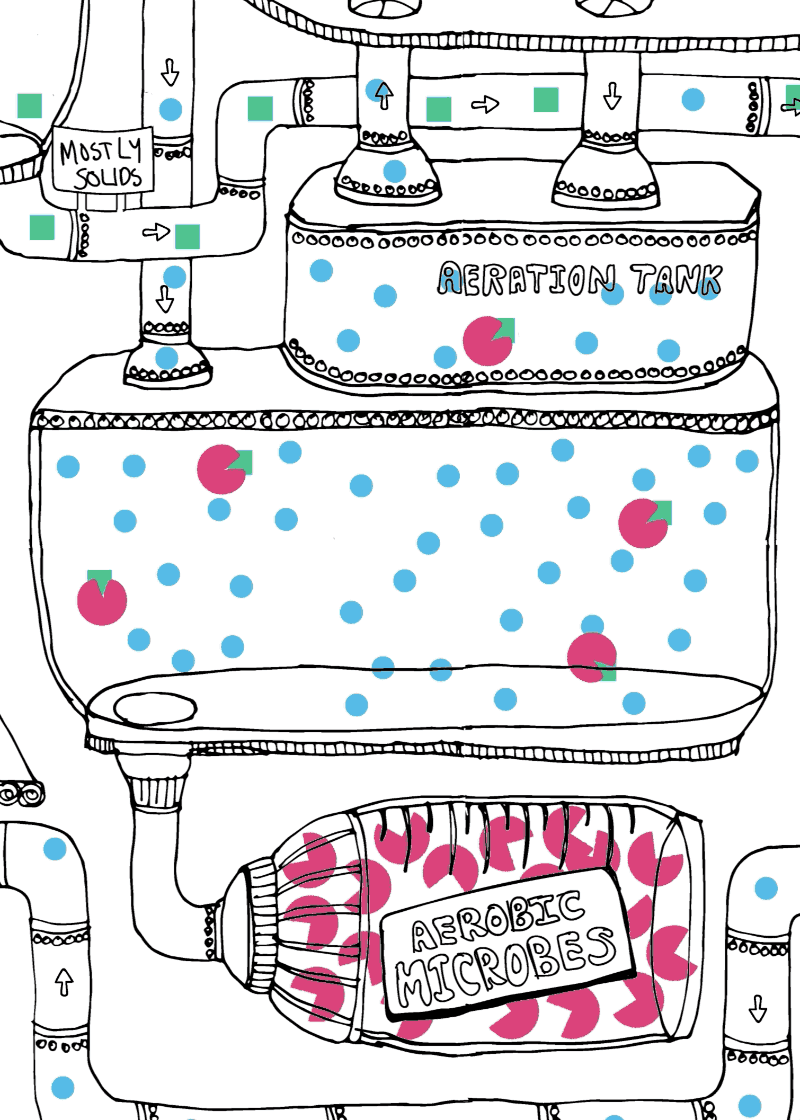
SIMRAN KHOSLA | WBEZ
The Curious City team is never one to leave out the vivid details, so the interactive also includes short sections called “closer looks.” This allowed them to delve into fascinating side-bar material like the water bear, a microorganism whose job it is to help break down bacteria in waste. As it turns out, Satchel loved that little detail, and the water bear became a real hero of the piece (hear Satchel respond).
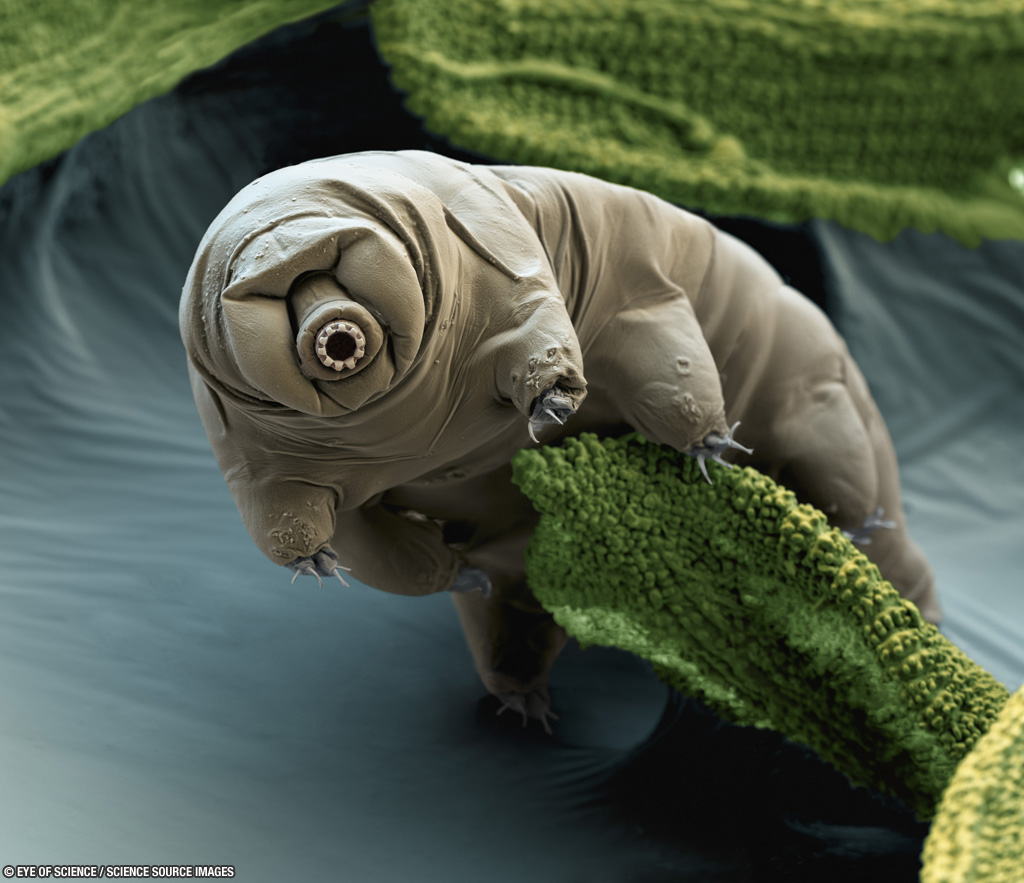
A closer look at the water bear, “one of the microbes that helps eat stuff in sewage that can make people sick” says Heffernan. Image credit: Nicole Ottawa and Oliver Meckes/Eye of Science/Science Source Images via WBEZ.
The interactive is described at the beginning as “kid-friendly” but it also notes, “if you’re not a kid, it’s a good reminder about our complex sewer system.” And it’s true: the interactive is helpful and digestible for all ages. It communicates to different age groups by incorporating multiple layers of information at once: you can just look at the pictures and GIFs, or you can read the text explaining the process in detail alongside each step. Either way, you’ll come away understanding the process.
The audio story
Reporter Shannon Heffernan narrates the audio story (created both for broadcast on WBEZ and as a podcast). Heffernan opens the 9-minute piece by introducing Satchel and her mom, Emily, and posing Satchel’s question: What happens to your poop when you flush it down the toilet? Heffernan then addresses her adult audience: “Before you tune out and think ‘I know this one, I’m no five-year-old,’ actually stop and think. Do you really?” She goes on to argue that Satchel’s question has significance for the city’s infrastructure and public health.
Typically, Curious City reporters try to involve their question-askers in the reporting process as much as possible. But Heffernan wasn’t able to bring Satchel and her mom to the water treatment plant. Instead, in the audio story, Heffernan visits them at home to explain what she learned at the plant. Heffernan shows Satchel the parts of the sewage process that take place in her own house. Then she explains the next steps of the process, from sewage pipes to treatment plant. She even plays them recordings from her interviews with the plant’s specialists.
Throughout the story, we get to hear Satchel’s real-time reactions as she learns: gleeful giggles, questions, and color commentary. In this way, the audio story showcases Satchel’s delight at discovering the answer. By situating Satchel as a central character in the story, Curious City created an audio piece that would be relatable for kids and easy to understand. But as the reporter, Heffernan also balances the story with more technical details and recordings from the treatment plant. Like Satchel does for kids, Shannon serves as a relatable character for her adult audience, sharing her own delight and discovery in the reporting process.
The live event
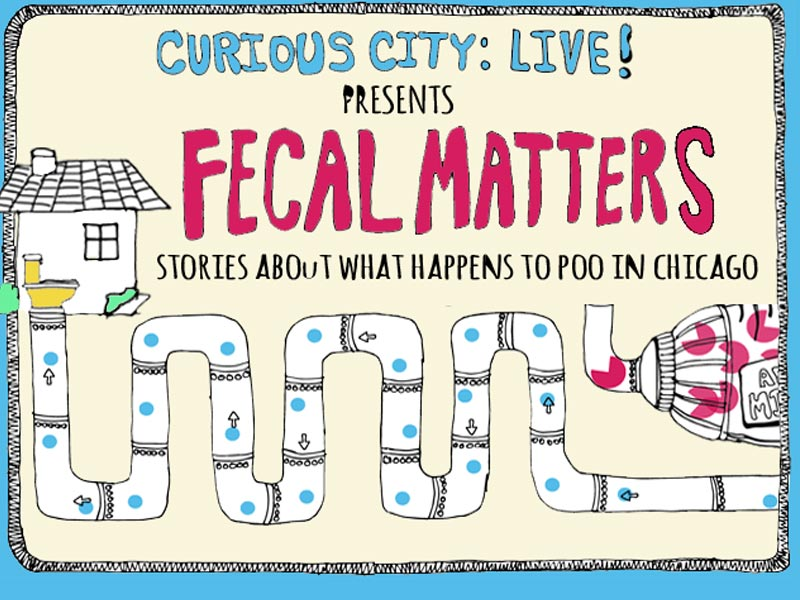
A week after the story aired on WBEZ, Curious City performed the story live at a kid-friendly event at Chicago’s Lincoln Hall. The event also included a related story: What does Lincoln Park Zoo do with all the animal poop?
WBEZ’s Event Producer Tyler Greene worked with Curious City to make sure the show met his rubric for a successful live radio event: It created a unique experience distinct from the experience of the audio and web stories, it had a visual component, and it involved audience participation.
As in the audio story, reporter Shannon Heffernan narrated the story live. She walked through the sewage process step by step, with a live band providing background music. Khosla’s animations were projected on a screen, providing engaging visual aids for the story. Heffernan also did a live interview with Toni Glymph-Martin, the microbiologist who was featured in the audio story. They spoke in more detail about the microorganisms that make it all possible (they’re bugs with jobs!).
The Curious City team already knew that Satchel was really delighted by the water bear. Her excitement gave them the idea to give the water bear a starring role in the live event. So they worked with the live band to perform an original song all about the funny and essential organism. It was a great opportunity to make the scientific details of the story accessible and memorable for everyone in the audience.
Finally, Heffernan brought Satchel and Emily onstage for a live interview and to present her with a parting gift. Because all the answers to Satchel’s questions were just online, Heffernan says they wanted “to give her something tangible to hold onto.” So Curious City transferred Khosla’s illustrations onto a custom roll of toilet paper for Satchel to keep. They actually made a few dozen rolls of the toilet paper and used them as giveaways and incentives for audience members to submit more questions.
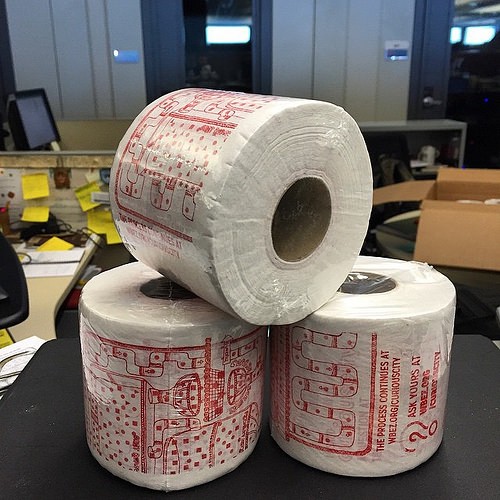
This customized toilet paper roll, which served as a reward for folks who asked questions at the live event as well as a thank you gift for question-asker Satchel, has the original explainer printed on it. Credit: Logan Jaffe, WBEZ.
According to Greene, this event was one of the first times WBEZ had tried to do something that put kids first. They sold 175 tickets, despite bad weather and the fact that their venue charged full price for kids (at $15 a ticket), which Greene says could have been a deterrent for many families. Still, he estimates around 100 of the attendees were kids. He and the Curious City team agree that the event was a success, proving that WBEZ could continue experimenting with children’s programming.
Conclusion
In a Hearken-powered editorial process, the first place to measure the success of a story is your question-asker’s response, because your question-asker acts as a stand-in for your audience as a whole. Satchel’s enthusiastic response to Heffernan’s reporting, her excitement at details like the water bear, and even her appreciation for her toilet paper gift all indicate that Curious City really succeeded at creating engaging journalism for kids.
Heffernan believes they succeeded at creating an experience of delight and discovery for kids and adults. But Heffernan says that delightful stories serve another purpose as well: “I argue that they actually help our heavier stories,” she says, “Because it gives the airwaves texture, and it brings more people in.”
By honoring this one young question-asker’s curiosity and giving it a thorough, fun treatment, Heffernan said it was easier for her to begin to unpack heavier questions about serious water issues in Chicago, like the failing sewage system on the South Side. Now, Heffernan says, “when people hear the words ‘sewage system,’ they have a reference for it” and that she’s freed up to go deeper into the topics at hand. “So I’m all for the super serious story,” Heffernan says, “But I think that the delightful stories actually help them. I think that they’re in service to them.”
More case studies
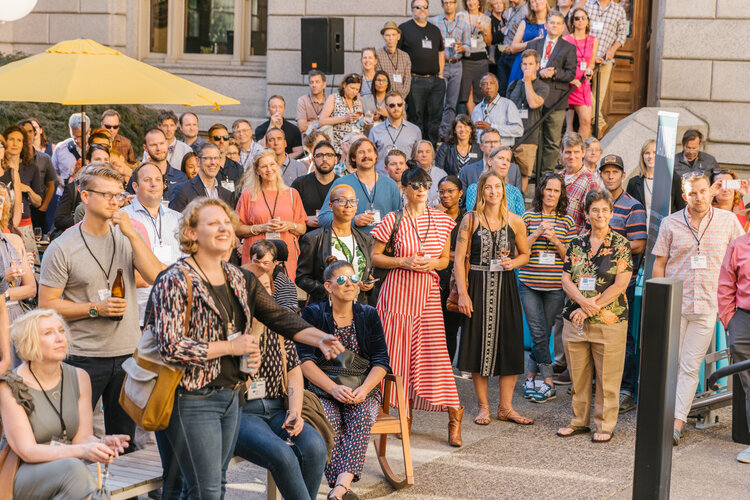
CASE STUDY – Business For a Better Portland (BBPDX)
How Business for a Better Portland grew to 400 members in three years
BBPDX saw an opportunity to design a 21st-century chamber of commerce that would leverage a broad spectrum of novel, high-impact engagement practices.
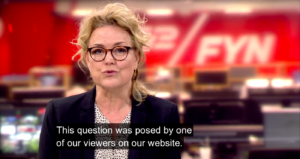
CASE STUDY – TV2 – Denmark
How Danish broadcaster TV 2/Fyn captured majority viewers during COVID-19 through engaging audiences
TV2/Fyn in Denmark had been working for years to become the go-to relevant source for news. When they launched Hearken’s EMS, they achieved that goal.
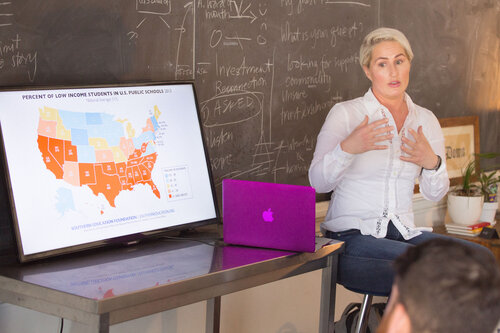
CASE STUDY – The Colorado Media Project
How Hearken helped the University Innovation Alliance design new offerings
Hearken worked with the UIA to research, scope, and design new services offerings to bring in additional revenue and expand their impact.
